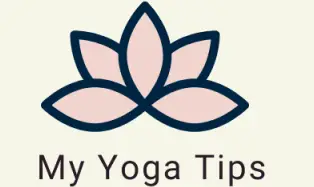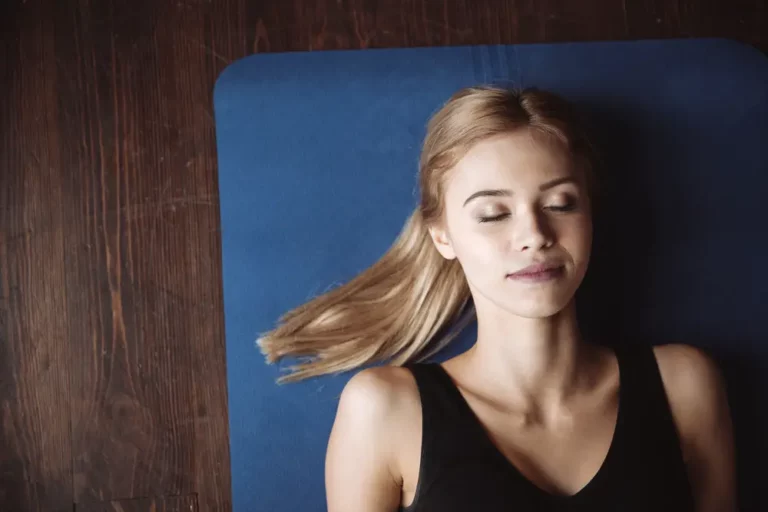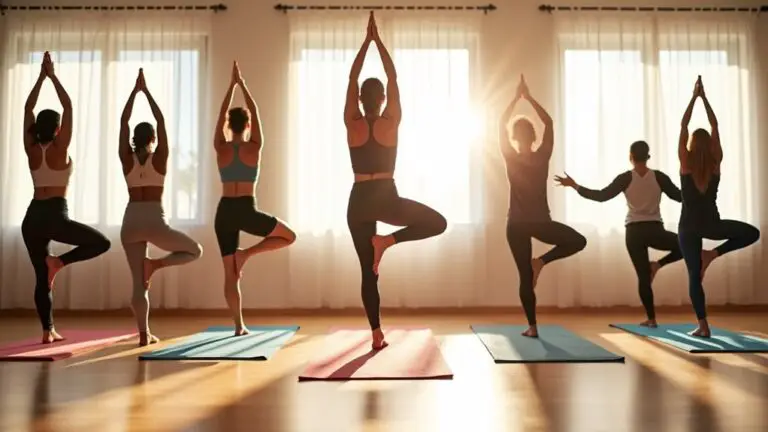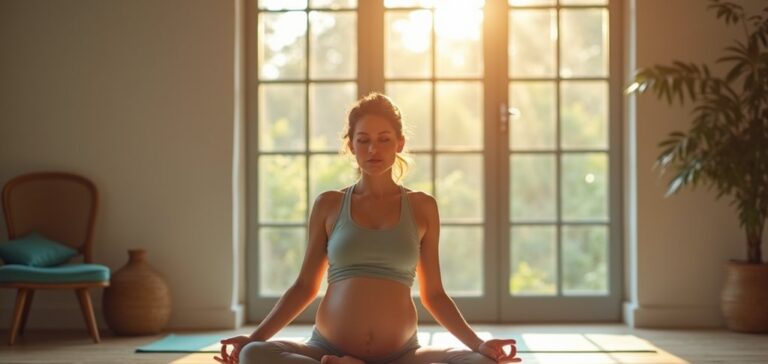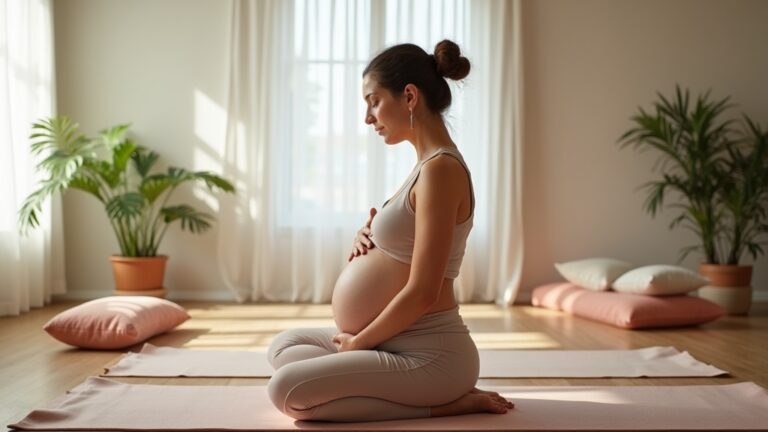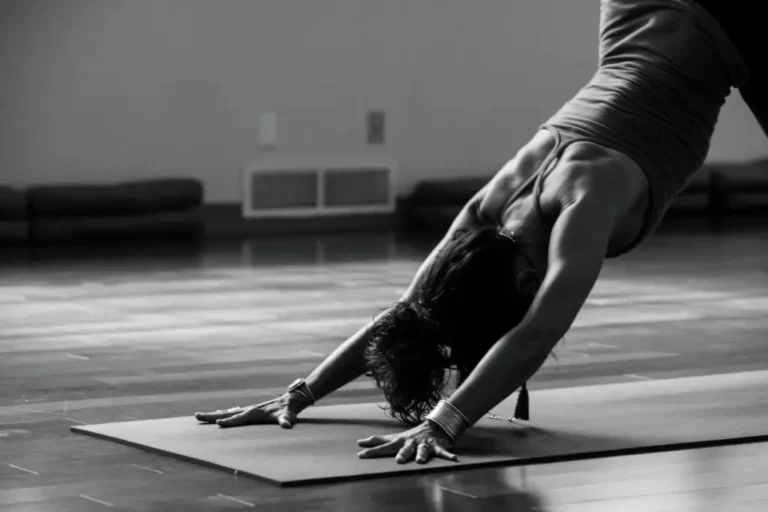Aerial Hammock Vs. Yoga Trapeze: What’s the difference?
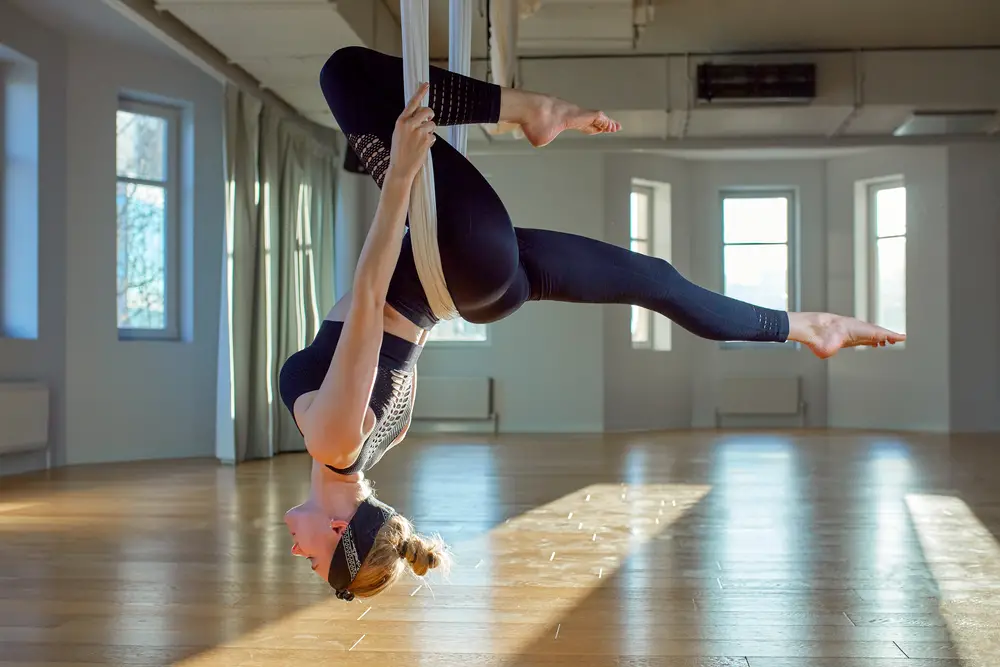
Hanging upside down is like that childhood moment when you hook your legs around a branch and look at the world from a different angle! In aerial yoga, this position is known as inversion. Aerial yoga uses aerial hammock sand yoga trapezes, each with different outcomes. Knowing what sets the hammock and the trapeze apart is wise.
Aerial hammocks are slings that cradle the body for free-flowing moves, whereas yoga trapezes are like circus swings for the acrobatics of aerial yoga. Though these aerial yoga props have different uses and benefits, both aid the body’s core strength in gravity-defying yoga routines.
Aerial fitness as a form of yoga is fast-growing, with routines supported by aerial hammocks and yoga trapezes. The hammocks and trapezes strengthen the body’s alignment, core, back, and spine. The hammocks and trapezes’ usesas gravity-defying apparatuses differ in application. It is good to know what each is used for.
The Difference Between An Aerial Hammock And A Yoga Trapeze
An aerial hammock and a yoga trapeze differ from each other. The differences are not immediately noticeable as these props hang from a central rigging point on a ceiling or as stationary apparatuses in an aerial yoga studio. The main difference lies between an aerial hammock’s design and a yoga trapeze. Others are the uses of aerial hammocks and yoga trapeze sand how these benefit us.
What follows is an overview of key differences based on design, use, benefits, and levels of skills needed.
Aerial Hammock vs. Yoga Trapeze: Design
The design of an aerial hammock and that of a yoga trapeze follows the functions defined by their uses. The aim of using an aerial hammock is closer to classic yoga, whereas a yoga trapeze is an acrobatic feat.A hammock works like a sling and a trapeze, a swing! The props allow for support and freedom of movement, which, in traditional yoga, is restricted by a mat.
Aerial Hammocks
The fabric used for an aerial hammock is known for its flexibility. The cradle or sling-like design of the aerial hammock, not unlike a conventional hammock, hangs from two points on a ceiling or from a frame. These rigging points are wider than an average shoulders width apart, allowing the fabric to loop down far.
The large rectangle fabricis attached to the ceiling or frame mounting with hooks. The rectangular shape is also wide enough to stretch to fit the length of someone doing a yoga hammock workout. The hammock is designed to be used perpendicular to the sides, much like being cradled in a cocoon!
The aerial hammock is made of silk, sometimes durable nylon, and is not bulky. The fabric can stretch to fit a person’s length and can be used as a cradle or sling to support the body in aerial yoga. Some say the most challenging part of being in an aerial hammock is to trust you are safe and secure!
Yoga Trapeze
The design of a yoga trapeze is not a single piece of fabric like that of the aerial hammock. The trapeze is rigged to two central anchors on a ceiling or frame. The trapeze is secured and hangs from these points. The distance between the rigging points is wider than an average shoulders width.
The trapeze has three pieces of fabric, a longer one in the middle and two equal-sized ones on the sides. The middle sling can unhook, hang free, or be hooked up (at any stage) as a loop or seat. The trapeze can also be like a circus trapeze with a swing bar. The handles and the bar on a trapeze is a design difference that follows the trapeze’s functions as being acrobatic.
The fabric used in the trapeze design is also not as large or as stretchy as the hammock. In the case of the hammock, the fabric’s size (width and length) is relevant to function and work as a giant cocoon. The material used for a hammock is different from the less flexible parachuting used for a trapeze. The silk or nylon stretch of hammocks fits its uses.
The hammock is a single piece of fabric, and the trapeze has different length loops that also can be set at different heights. The straps that fasten the trapeze to the ceiling or a frame are adjustable. The sides of the fabric hang down, and each side has a set of handles. There are between 1 and three sets of handles on a trapeze, all at equal heights. Hammocks don’t have handles.
The trapeze design also has straps attached to the trapeze fabric that can be adjusted to different heights. The hammock does not have the option. But, the flexible material and thinness of the hammock fabric make it possible to use a hammock similarly by winding the fabric around one’s writs or ankle.
Aerial Hammock vs. Yoga Trapeze: Uses
The design of the aerial hammock and the yoga trapeze informs their uses. Both are designed as suspended apparatuses, as anti-gravity props (as seen above). The hammock is a single large sling, and the trapeze has three strands of fabric with three sets of handles.
Aerial Hammock
The aerial hammock is a large fabric that functions as a cradle or a giant sling. The hammock is suspended in the air. It works as a cocoon to support one’s body or can be used as a sling or a seat for balance. The flexible fabric gives support for backwards and forwards poses. And can be used to do inversions. The hammock, however, has no support handles like the trapeze.
The hammock is known for the support it gives to doing aerial yoga poses. The flexibility of the fabric, which is also stretchable, allows the hammock to be used for upside-down poses. The material’s elasticity takes on the body’s shape.
The fabric is silk or nylon, allowing for complex maneuvers and poses you can’t do with the trapeze. The hammock supports the body, almost like lying on a yoga mat, but in the air. The support gained from the hammock can be as large as stretching from one’s shoulders to one’s ankles. You can be face-down and lean forward to rest your hands on the floor.
Some aerial yogis who work on trapezes say that the single and flexible sling of a hammock outweighs what can be done on a trapeze with handles. The key use of an aerial hammock is support. The support is then mostly from lying horizontally across the sling. The absence of handles to pull oneself up is not an issue. The handles on a trapeze, for some, get in the way.
The wider fabric is mainly used for restorative poses, which work best with the whole body supported and suspended. This is impossible on a trapeze, where the postures and movements depend on how you use your body, mostly pulling yourself up (see below). A hammock sling is also associated with pretty poses and flowing dance movements.
Yoga Trapeze
The yoga trapeze is likened to a workout. Some yogis even compare it to a spinning class! The trapeze handles are a key reason for this – with plenty of the poses and maneuvers, including the handles. The trapeze is often styled on those used in circuses and used with a bar too.
Now you know that aerial yoga is the hottest new exercise, why not give free rein to your acrobat inner-child and try out a yoga trapeze? With a yoga trapeze, you can do shoulder stands, headstands, handstands, and even plow poses in a circus-like fashion. Try the trapeze even if you couldn’t do any of these on a yoga mat!
The trapeze is used for the ability to pull oneself up, stretch out plank-style, and flip into an inversion. The trapeze is made of parachuting – a much firmer material with less flexibility. There is less stretch on the fabric of a trapeze, and the use of a trapeze is more acrobatic.
The three sets of handles hanging on the sides at the same intervals are used for pull-ups and hanging – straight-forward or as inversion. The handles are functional in uses for poses – even those Superman, or Spiderman, even Traction Joe acts!
The trapeze has handles to pull oneself up and flip upside down. The trapeze enables backbends, pulling, and grip strengths primarily associated with yoga-mat routines.
Aerial Hammock vs. Yoga Trapeze: Benefits
The differences between an aerial hammock and a yoga trapeze result in different ways in which the body is used or what we can do. Both props are used to do an inversion. The outcome is varying benefits – the aerial hammock is a prop that supports free-flowing poses, and the trapeze is action-bound and comparatively energetic.
The hammock and the trapeze are both anti-gravity-defying props suited to aerial yoga routines. The benefits of using a hammock compared to a trapeze differ, though. Novices should work under instructions and even consult a health practitioner before attempting this.
Aerial Hammock
The benefits of using an aerial hammock are in its design and the materials used to construct the hammock. The benefits are linked to how the hammock supports the body and how, as the hammock molds easily, the support aids aerial yoga moves. The hammock works as a sling, and the flexibility of the fabric offer elasticity that the trapeze doesn’t have.
One of the most frequent responses to using an aerial hammock is that a hammock gives a feeling of free-floating. This anti-gravity suspension’s benefit is relaxing, taking the strain off the moves (and the body), and gently supporting the body. The benefits are one’s ability to relax with routines one is accustomed to doing on a mat. Transposing mat-work for this airborne variation is addictive.
The benefits lie in the fluidity of movements that can be done with an aerial hammock. It takes some practice, though. Using aerial hammocks benefit the proper alignment of one’s body. The sling or cradle molds (and hold) the body. The benefits also are that as one relaxes, one can deepen one’s sensory awareness. The hammock’s floating motions, suspended in a silk hammock, are restful.
The benefits of an aerial hammock appear endless. The hammock is designed to take pressure off one’s body, especially one’s head and shoulders. The support from the hammock aids one’s posture and improves one’s flexibility.
A hammock’s benefits range from doing gentle forms of inversion therapy to strengthening (even lengthening) and realigning one’s body. Learning to use an aerial hammock is comparatively easier than a yoga trapeze. The hammock is designed to support the body, move naturally, and mold into yoga moves rather than an energetic workout associated with a trapeze (see below).
Yoga Trapeze
The yoga trapeze is used as inversion therapy. The trapeze temporarily takes the load off the spine to counter the effects of spinal compression due to gravity. The yoga trapeze is definitely a more strenuous workout. But equally relaxing, too, as the trapeze is designed as an anti-gravity prop in aerial yoga.
The trapeze is designed to increase flexibility and works on core muscles. The benefits are to strengthen one’s core and realign one’s body. Whereas the hammock suits all sizes, the trapeze requires instructions, and, in some instances, you might need a doctor’s okay. Be warned that a trapeze takes vigor and strength as an aerial yoga workout.
As much as the benefits are physical strengths, there are benefits for the mind too. The routines on a trapeze take precision and mind-control, but mostly core strength. In this sense, what it takes to perform, also builds one. A yoga trapeze is relaxing with the benefits of aerial yoga maneuvers improving one’s mental health.
The trapeze is an aid to achieving the goals of defying gravity and focusing one’s body’s core, back and spine. A trapeze workout often combines Pilates, yoga, dance routines, and acrobatics routines. Many say these yoga trapeze acts challenge one’s inhibitions to aspire to new lengths or heights! The acrobatic elements put up challenges that, when achieved, are rewarding.
Aerial Hammock vs. Yoga Trapeze: Levels OF Fitness
These props are not just a flying sensation of being suspended in the air! Or, like on an aerial hammock, floating! The props are used for aerial yoga routines ranging from acrobatics to dance moves. One thing is for sure, both the aerial hammock and a yoga trapeze take a degree of fitness to master. Often, it’s difficult to distinguish between fitness levels.
Aerial Hammock
An aerial hammock can be therapeutic, and meditative and aid the body’s realigned. Using a hammock as a prop is considered free-flowing movement. The hammock is used in dance routines and is considered pretty!
It takes training and a reasonable level of expertise and fitness to be suspended in the air cocoon-style, and techniques (though said to be easier than the trapeze) take time to master. The hammock is not just a reclining prop for relaxation, but the hammock is supportive in doing even headstands. These inverted positions take fitness and practice.
Another skillful act is to use the fabric sides of the hammock as handles and flip back into the support of the hammock sling! Try out dance routines or a mermaid pose!
Yoga Trapeze
It’s not just the health and relaxation aspects that matter. Now there’s agility – gravity and age-defying – with performances that happen when suspended in the air! The yoga trapeze breaks with mat-bound classic yoga by introducing a dimension of movement that works in a 3-d plane. The skill level to use a yoga trapeze lies between skills to do Pilates and to be a circus acrobat!
The swing-like actions of the trapeze and the acrobatic moves take muscle and core strength. The anti-gravity exercises are physically challenging. The trapeze demands that you physically engage with your hands, arms, feet, and legs and move, twist, turn, stand, and hang!
The acrobatic acts are skilful. Think of standing next to a trapeze and, with one move, grabbing the handles of the trapeze. Then flip your body, get your feet in another set of grips, and hang upside-down! The skills for trapezes appear demanding and even more than those of a hammock.
The demand and fitness levels might vary as one thinks of an aerial hammock as support to cradle the body or a sling for aerial maneuvers. And a yoga trapeze is full of swinging movements, standing suspended and quick flips, upside-down!
Conclusion
Classic yoga takes on new meanings with the use of aerial hammocks and yoga trapezes – both central to aerial yoga as a sub-branch. The differences outlined here are self-evident and the choices are the aerial hammock’s cradle support or the active and energetic trapeze. Both have benefits to strengthen the core, relax, and take the strain off the earth’s gravitational pull.
Personal preference appears to be the guide as the difference between an aerial hammock and a yoga trapeze lies in the design of the apparatuses more than the benefits.
Resources
